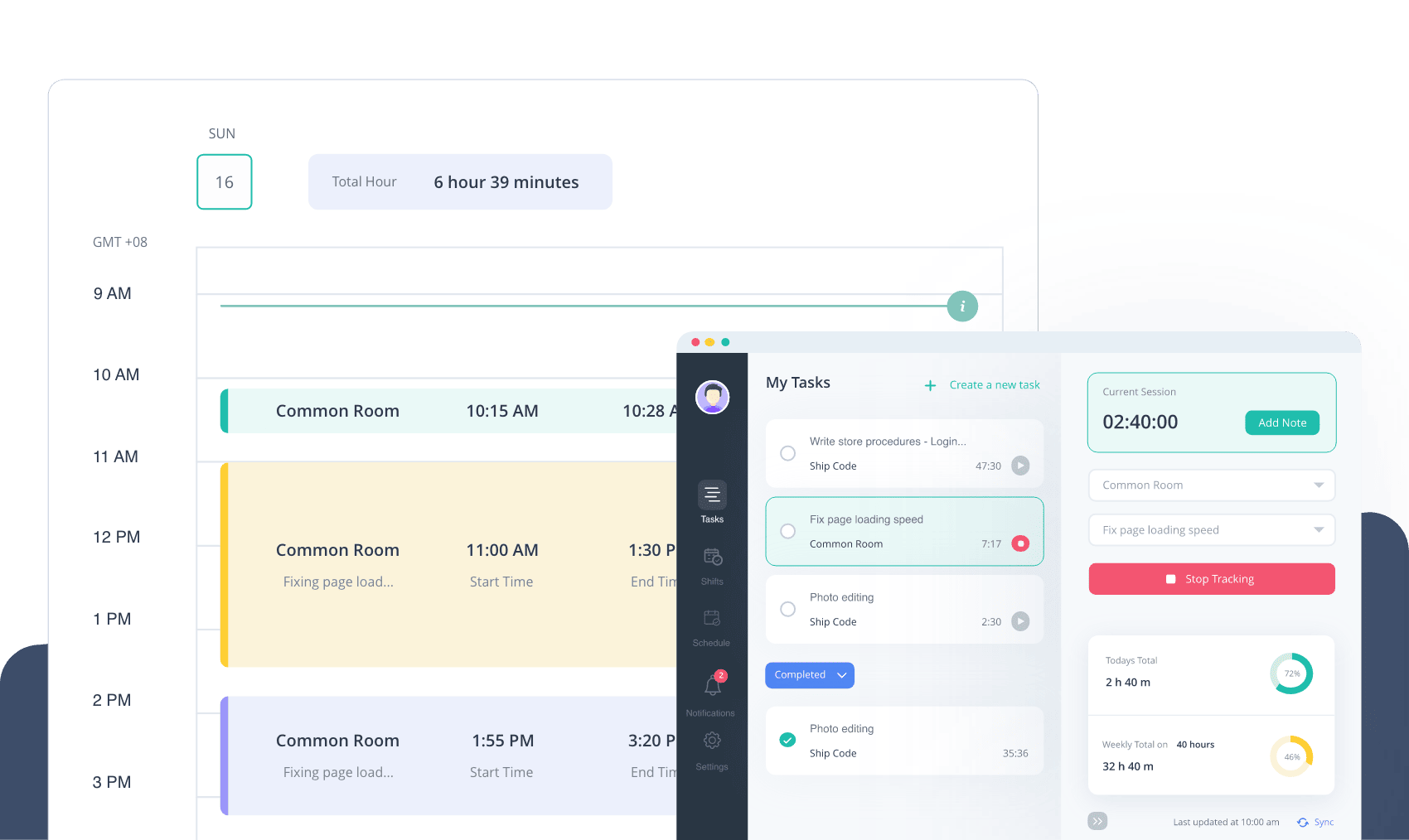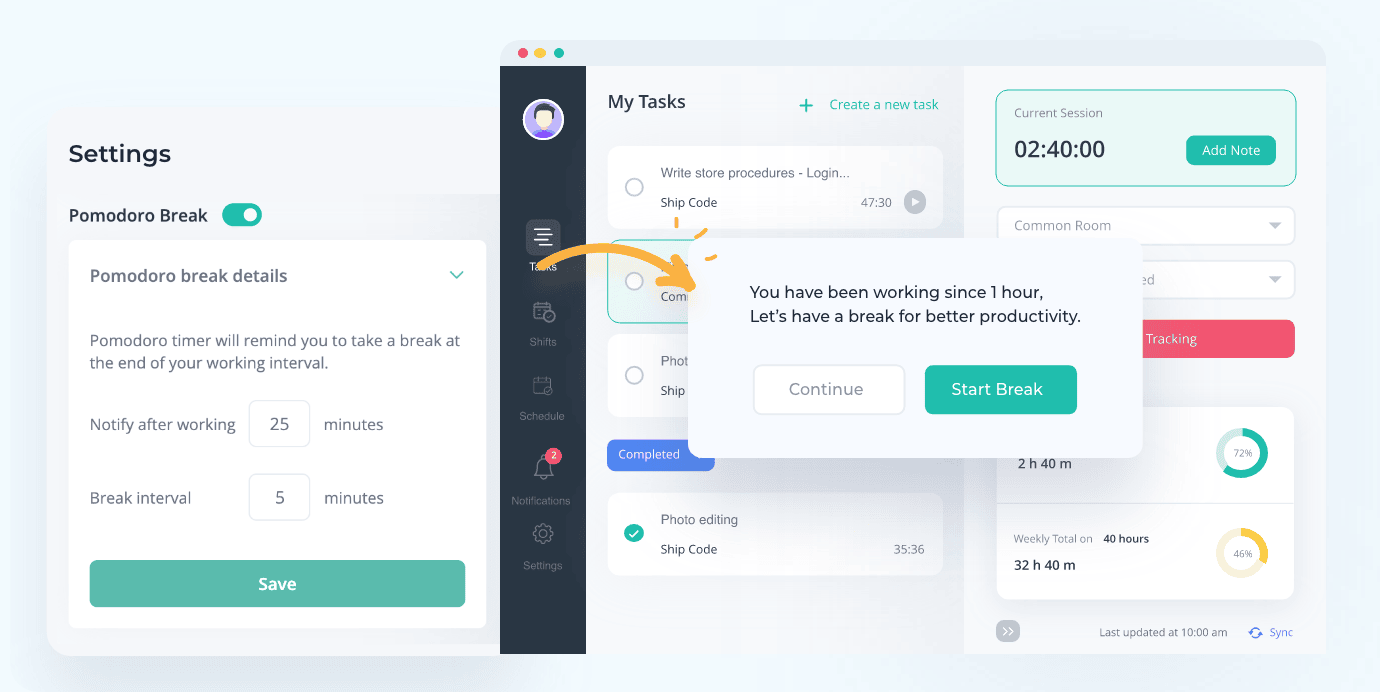Working Remotely: Pro Tips for Efficient Time Management

For over a year now, over one-half of the global workforce has been working from home. Remote work has its benefits over office work, but there are some downsides to it as well.
Working remotely comes with a level of independence, especially in how we organize our schedules and manage our tasks. One of the many challenges we encounter daily is also being able to focus on work in the same space we usually use to relax.
Whether we prefer staying at home or working from our offices, it is clear that we had to adapt to this workflow and make the best of it. This article will share some tips that can help you be better organized, more focused, and overall more productive when working from home.
So, let’s get started.
Some Tips for Efficient Time Management while Working Remotely
Tip #1 Create your schedule
Remote work implies a certain level of flexibility. We can organize our working hours how we think it’s best.
However, if we leave everything to our day-to-day planning, we won’t get any work done. Having flexible working hours doesn’t mean we shouldn’t have any structure during our workweek.
The first step to increasing your flexibility is to create your schedule and stick to it. Create a timeline to set your goals and milestones, and then manage your weekly tasks accordingly.
For example, if your work clock timer is 9 a.m. to 5 p.m. - the first hour is reserved for checking your emails and writing replies. The afternoon or idle hours can be dedicated to daily standup meetings and discussions.
Important Read:
↘️15 Types of Effective Work Schedules
Tip #2 Keep a healthy routine
One of the key factors in being productive when working from home is your lifestyle outside of the work itself. This is why many tips and tricks for remote work include having healthy habits such as an eating schedule, exercise, meditation, and beauty sleep.
When we work from our bedrooms, it is difficult to plan anything out. We are tempted to take breaks for coffee and snacks all the time, and it is easy to get carried away.
Having a healthy routine means sticking to your sleeping schedule and waking up at the same time each morning. Your routine should include time for breakfast and coffee, as well as the lunchtime break in your daily schedule.
Make sure your daily activities include some physical activity as well. Working from our chairs and not having to go outside has an impact on our metabolism. This is what makes us feel more tired than we usually are.
Use your free time to walk a dog or go jogging in the park. If it’s cold outside, you can always do a set of exercises at home. This activity will help you be more energized and thus more efficient, which is why it requires its place in your daily routine.
Tip #3 Keep track of your time
Working from the comfort of our homes is tricky in many ways. One of those ways is not being able to track how much we have worked.
I’m sure you’ve noticed how you’ve sometimes worked until late at night and not been aware of the time passing by. Or, on the opposite side of the same spectrum, you’ve made longer breaks, and you don’t know if you have worked enough in your shift.

Luckily, there are different time management techniques that can help us orient in time during our day. Apps like Apploye help you keep track of your time working on your computer. Most time trackers also have screenshot monitoring to let you know exactly what was being worked on.
Having an insight into how much you efficiently work during the day can help you plan and be more organized. Ultimately, you will establish a workflow that will enable you to have more free time for yourself - to do the things you love.
Tip #4 Create your home office space
Not all of us have a designated space at home that has the role of our temporary office. Working in a full house can be challenging, especially if you are working remotely with kids in the same room.
Home office space doesn’t have to be a room for yourself or anything extravagant. To have a designated space for work, all you need is a desk and the environment around it to signal your brain that you are now in work mode.
For some people, putting on clothes for work, a watch, or headphones with jazz music is enough to isolate them from the rest of the apartment and the home environment.
Even though the flexibility of remote work implies we can work from our kitchen or our bed if we want to, it doesn’t mean that having an office space is not important. This flexibility is one of our biggest enemies when we are trying to focus, but everything else is too distracting.
Tip #5 Reduce distractions
Talking about distractions, there is so much that gets our attention when we are at home. Starting from our housemates, children, things that need to be fixed or cleaned around the house, and many others.
One of the best tips to reduce distractions around you to a minimum, besides designating a home office space, is to use a schedule to set apart your life at home from your work.

One of the most efficient techniques that have been proven efficient for many people is the Pomodoro technique. Many apps can help you set a timer on your work and a timer on your breaks, so you can achieve the most out of each working day.
Forest, for example, is an app that uses the Pomodoro technique to keep you focused and away from your phone - social media, forums, chats, and games - chats that are attention-consuming throughout the day.
Tip #6 Make some time for yourself
Just because we work from home, it doesn’t mean our home is our working environment and every minute of our time needs to be spent on being productive. The whole reason why we try to organize ourselves better, in fact, is so that we can have more time for our hobbies during the day.
Making time for yourself in your schedule is viable for your brain and body to function. So, don’t feel guilty about taking breaks and stepping away from your screen for as long as you need.
After a long day of online meetings, we tend to experience something called Zoom fatigue. And when we feel overwhelmed with sitting and typing all day long, we owe it to ourselves to rest and reset.
When we talk about time management, we should highlight that taking breaks is a part of a healthy daily workflow. Use your free time to rest your eyes, read a time management book, go for a walk, and listen to some music.
Tip #7 Optimize your communication channels
Now that we no longer share an office with our teammates, we got caught up in a modern world of management tools, to-do lists, Zoom calls, and many, many emails. Remote work monitoring tools and business phone services are supposed to make our work easier. But, if we don’t coordinate them accordingly, they can make us even more confused and consume a lot of time.

When working with your team, make sure you only spend time on those efficient apps that have been proven to work for you. Use one app to keep track of all your tasks, milestones, and files. Use one app to share information and chat with your team - not every detail needs to be decided in a separate meeting.
Once you notice a digital tool is taking up your time and energy, move on to another one. The marketplace for organizational and communicational tools is getting bigger every day, and there is no need to stick to old, inefficient habits.
Last Words
Working from home effectively is not only a new labor trend; it has become a necessity over the previous year. Organizing our own time can be rewarding but also challenging in so many ways.
Taking regular breaks and relaxing is what a lot of people take for granted. But, the truth is that not having some time for ourselves can result in burnout, which will have more significant consequences than taking a few coffee breaks throughout the day.
If you still haven’t managed to find the best way to coordinate your day and week, don’t worry. Keep in mind that what works for others might not work for you. It takes some time to find the right balance between a healthy schedule and a comfortable workflow.